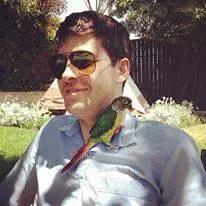Until now, we have used the topic particle after the subject of the sentence. The subject was the topic of our sentences, because we wanted to say something about the subject.
We did this because when talking about the subject, we assumed the subject was already known to the speaker and the reader, and the new piece of information was what came after the は particle. In fact, every time we say X は, the sentence keeps its meaning if we remove X は from the sentence.
In case we want to introduce the subject, or the subject is the description instead of the thing we want to describe, we use が instead of は after the subject.
Using が and は well is very complicated, and you don't need to understand their difference fully right now. We hope that during the course, it will become clearer to you when to use which.
When the subject is a question word, we cannot use the topic particle は. We have to use が in this case, because the subject cannot be a topic already known to the speaker. If we remove どれが from the first sentence in the table below, its meaning will have changed. However, in a sentence like あれはきれいです, we can drop あれは and the meaning is still the same, if we assume the speaker is still speaking about the same object.
| English | Japanese |
|---|---|
| Which one is beautiful? | どれ が きれい です か?dore ga kirei desu ka? |
| A: Which one is mine? B: This one is yours. | A: どれ が 私 の です か? B: これ が あなた の です。A: dore ga watashi no desu ka? B: kore ga anata no desu. |
The response to a question with a question word will also use the が particle. In the second example, これ is a new piece of information, therefore we use が. Note also that we cannot drop the subject and just say あなたのです, as Person B would not be identifying specifically which object is Person A’s.
TLDR: が is used when the focus is on the subject, and は is used when the focus is the comment on the subject.

